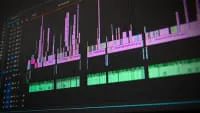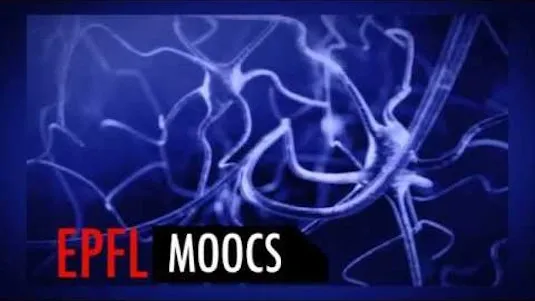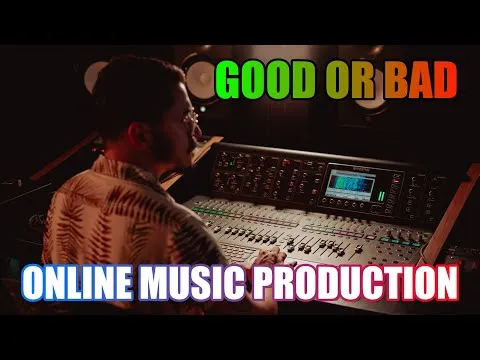
Introduction to Sound Design for Moving Images 
This course provides an introduction to the key concepts and techniques of sound design for moving images, such as film, television, and video games. Participants will gain an understanding of the fundamentals of sound design and its application to visual media. ▼
ADVERTISEMENT
Course Feature
![]() Cost:
Cost:
Free
![]() Provider:
Provider:
Udemy
![]() Certificate:
Certificate:
No Information
![]() Language:
Language:
English
Course Overview
❗The content presented here is sourced directly from Udemy platform. For comprehensive course details, including enrollment information, simply click on the 'Go to class' link on our website.
Updated in [March 06th, 2023]
Introduction to Sound Design for Moving Images is an essential course for anyone interested in creating soundtracks for films, television, video games, and other media. Learners will gain an understanding of the elements of sound design, workflows for audio recording and postproduction, principles of creative sound composition, and psychoacoustics and perceptual organization. Through this course, learners will gain the skills to create soundtracks that are both creative and technically sound.
The course begins with an overview of sound design, including the fundamentals of sound, the elements of sound design, and the importance of sound in storytelling. Learners will then explore the workflows for audio recording and postproduction, including microphone selection, recording techniques, and audio editing and mixing. The course will also cover the principles of creative sound composition, such as sound synthesis, sound design, and sound effects. Finally, learners will learn about psychoacoustics and perceptual organization, including the perception of sound, the perception of space, and the perception of emotion.
By the end of the course, learners will have a comprehensive understanding of sound design and be able to create soundtracks that are both creative and technically sound. They will be able to apply their knowledge to create soundtracks for films, television, video games, and other media. Additionally, they will have the skills to record, edit, and mix audio, as well as create sound effects and soundscapes. Finally, they will have a better understanding of psychoacoustics and perceptual organization, allowing them to create soundtracks that are both emotionally and technically engaging.
[Applications]
The application of this course can be seen in the field of sound design for moving images. Students who have completed this course can use their knowledge to create soundtracks for films, television shows, video games, and other multimedia projects. They can also use their understanding of psychoacoustics and perceptual organization to create soundscapes that are both creative and effective. Additionally, they can use the workflows they have learned to record and postproduce audio for their projects.
[Career Paths]
1. Audio Engineer: Audio engineers are responsible for recording, mixing, and editing audio for a variety of media, including film, television, radio, and video games. They use specialized equipment to capture and manipulate sound, and must have a strong understanding of acoustics and sound design principles. As technology advances, audio engineers are increasingly expected to be proficient in digital audio workstations and other software.
2. Music Producer: Music producers are responsible for overseeing the production of music recordings. They work with artists to create the desired sound, and are responsible for selecting and arranging the instruments, recording and mixing the tracks, and ensuring the final product meets the artist's vision. Music producers must have a strong understanding of music theory and production techniques, as well as the ability to work with a variety of artists and genres.
3. Sound Designer: Sound designers are responsible for creating sound effects and soundscapes for a variety of media, including film, television, video games, and theater. They must have a strong understanding of sound design principles and be able to create unique and compelling soundscapes. As technology advances, sound designers are increasingly expected to be proficient in digital audio workstations and other software.
4. Foley Artist: Foley artists are responsible for creating sound effects for film and television. They use a variety of objects and techniques to create realistic sound effects, and must have a strong understanding of sound design principles and be able to work quickly and accurately. As technology advances, Foley artists are increasingly expected to be proficient in digital audio workstations and other software.
[Education Paths]
1. Bachelor of Arts in Music Technology: This degree program focuses on the use of technology in music production, composition, and performance. It covers topics such as digital audio workstations, sound synthesis, and audio engineering. It also provides students with the skills to create and manipulate sound for film, television, and video games. As technology continues to evolve, this degree path is becoming increasingly popular.
2. Bachelor of Science in Audio Engineering: This degree program focuses on the technical aspects of sound production and engineering. It covers topics such as acoustics, signal processing, and digital audio workstations. It also provides students with the skills to create and manipulate sound for film, television, and video games. As technology continues to evolve, this degree path is becoming increasingly popular.
3. Master of Arts in Sound Design: This degree program focuses on the creative aspects of sound design. It covers topics such as sound synthesis, sound design, and audio post-production. It also provides students with the skills to create and manipulate sound for film, television, and video games. As technology continues to evolve, this degree path is becoming increasingly popular.
4. Master of Science in Audio Production: This degree program focuses on the technical aspects of sound production and engineering. It covers topics such as acoustics, signal processing, and digital audio workstations. It also provides students with the skills to create and manipulate sound for film, television, and video games. As technology continues to evolve, this degree path is becoming increasingly popular.
Course Syllabus
Origins of Sound Design, Acoustics Intro, Recording and Equipment
Field Recording, Soundscape, Digital Audio Signals
Electronic Music History, Movement, Spectromorphology, Psychoacoustics
Psychoacoustics, The Auditory Scene, Sound Localization, Mix Structure
Contrast in Sound Design | Mix Stems Deeper Dive | 1-Minute Soundscapes Due
Audiovisual Aesthetics | Asynchronicity | More Compositional Concepts
Readings
Sound Design Case Study
Beyond Film and Video
Pros & Cons

Interesting and technical.

Good method to start understanding sound.

No explanation.

Only blogs.
Course Provider

Provider Udemy's Stats at AZClass
Discussion and Reviews
0.0 (Based on 0 reviews)
Explore Similar Online Courses

Algebre Lineaire (Partie 2)

Building Regression Models with Linear Algebra

Python for Informatics: Exploring Information

Social Network Analysis

Introduction to Systematic Review and Meta-Analysis

The Analytics Edge

DCO042 - Python For Informatics

Causal Diagrams: Draw Your Assumptions Before Your Conclusions

Whole genome sequencing of bacterial genomes - tools and applications

online music production course good or bad

I Learn How to Produce Music in 12 DAYS!

Music Production Classes Online
 Related Categories
Related Categories
 Popular Providers
Popular Providers
Quiz
 Submitted Sucessfully
Submitted Sucessfully
1. What is the main focus of this course?
2. What is the most important element of sound design?
3. What is the main goal of sound design?
4. What is Psychoacoustics?
Correct Answer: The study of sound perception.


Start your review of Introduction to Sound Design for Moving Images